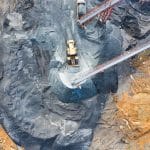Liga Asuransi – Dear readers, how are you? I hope your business is doing well as planned.
I think you will agree with this statement “No matter how skilled or experienced someone is, they can still make mistakes or fail.” Or “Even the best-laid plans can go awry.”
Let’s continue discussing the risks of professional service provider companies, this time about the Structure Engineer profession and their critical services in building construction.
As a senior insurance broker, I would like to discuss the structure engineer profession and the risks they face.
If you are interested in this article, please share it with your colleagues, so they understand like you.
UNDERSTANDING THE STRUCTURAL ENGINEERING SCOPE OF WORKS
A structural engineer is responsible for designing and analyzing the structural systems that make up a building, such as the foundation, floors, walls, and roof. The structural engineer works closely with the architect and other design professionals to ensure the building is safe, stable and meets all the necessary building codes and regulations.
The scope of work of a structural engineer can vary depending on the specific project but typically includes the following:
- Structural Analysis
The structural engineer analyzes the forces and stresses that the building will be subjected to, and designs the structural systems to resist them. They will use computer software and other tools to perform calculations and simulations to ensure a robust design.
- Structural Design
Based on the analysis, the structural engineer will design the structural systems of the building, such as the beams, columns, slabs, and foundations, ensuring that they are structurally sound and meet all the necessary building codes and regulations.
- Construction Administration
During the construction phase, the structural engineer may review and approve shop drawings, conduct inspections, and respond to contractor questions and concerns. They will also ensure that any changes to the design during construction maintain the structural integrity of the building.
- Forensic Engineering
In the event of a failure or damage to a building’s structure, a structural engineer may be called upon to investigate and determine the cause of the loss and provide recommendations for repair or reconstruction.
The scope of work of a structural engineer is to ensure that the building’s structural systems are safe, stable, and capable of supporting the building’s intended use over its design life.
THE QUALIFICATION OF STRUCTURE ENGINEERS
To become a structural engineer, one typically needs a strong mathematics, physics, and engineering background. Here are the typical qualifications required for a structural engineer:
- Education
A structural engineer usually holds a bachelor’s degree in civil engineering, focusing on structural engineering. Some universities also offer structural engineering as a separate degree program. In addition, a master’s degree or Ph.D. in structural engineering or a related field can be helpful for career advancement.
- Professional Licensing
To practice as a structural engineer, one must be licensed by the state where one works. This typically involves passing the Fundamentals of Engineering (FE) and Professional Engineering (PE) exams and meeting other education and experience requirements.
- Professional Experience
To become a licensed structural engineer, candidates usually need at least four years of relevant work experience. This experience is typically gained through internships or entry-level positions at engineering firms.
- Professional Skills
Structural engineers must have strong analytical and problem-solving skills and the ability to work well in a team environment. They should also be proficient in computer-aided design (CAD) and structural analysis software.
- Continuing Education
Structural engineers must stay up-to-date with the latest developments and techniques in the field. Continuing education courses and seminars are usually required to maintain a professional license.
The qualifications of a structural engineer include a solid education in civil engineering, professional licensing, relevant work experience, strong analytical and problem-solving skills, proficiency in engineering software, and ongoing professional development.
HOW TO SELECT THE BEST STRUCTURE ENGINEER?
Selecting the best structural engineer for a project requires careful consideration of several factors. Here are some steps you can follow to help you choose the best structural engineer for your project:
- Research and Evaluate
Start by researching and evaluating potential structural engineers for your project. Look for engineers with experience and expertise in the type of project you are planning. Consider their education, certifications, professional affiliations, and years of experience.
- Check References and Past Work
Ask for references and examples of past work from the structural engineer, and take the time to follow up with those references. Look for projects similar to your own and evaluate the quality of the engineer’s work, including their attention to detail, communication skills, and ability to work within a team.
- Evaluate Communication and Collaboration Skills
Communication and collaboration skills are critical for a successful project. Consider the engineer’s ability to communicate effectively with other design and construction team members, including architects, contractors, and owners.
- Consider Cost and Schedule
Evaluate the engineer’s proposed cost and schedule for the project, including their ability to meet project deadlines and stay within budget.
- Review Licenses and Insurance
Ensure the engineer has the appropriate licenses and insurance, including Professional Liability Insurance, to provide services in your state or jurisdiction.
- Trust Your Gut
When selecting a structural engineer, trust your instincts. Choose someone you feel confident and comfortable working with and with a track record of delivering quality work on time and within budget.
Following these steps, you can select the best structural engineer for your project and ensure a successful and well-designed structure.
WHAT ARE THE RISKS OF STRUCTURE ENGINEER SERVICE?
As with any professional service, there are potential risks associated with using the services of a structural engineer. Here are some of the most common risks:
- Errors in Design
One of the primary risks of using a structural engineer is that there may be errors in the design of the structural systems. These errors could lead to various issues, including structural failure, safety concerns, and additional costs for repairs and modifications.
- Non-compliance with regulations
Structural engineers must ensure their designs comply with all relevant building codes and regulations. If they fail to do so, it could result in legal liability and penalties.
- Miscommunication
Miscommunication between the structural engineer and other design team members, such as architects and contractors, can lead to errors and misunderstandings. This could result in delays, additional costs, and potential safety hazards.
- Scope Creep
If the scope of work for the structural engineer needs to be clearly defined, it could lead to additional work and costs beyond the initial agreement.
- Construction Issues
Even if the structural engineer provides a sound design, construction issues such as poor workmanship, material defects, or unforeseen site conditions could still cause problems with the structure.
To mitigate these risks, choosing a qualified and experienced structural engineer is important, clearly defining the scope of work and deliverables, maintaining open communication throughout the project, and conducting regular quality control checks during construction.
THE STRUCTURE ENGINEER’S LEGAS CASES
There have been several high-profile legal cases in which structural engineers have been sued or held responsible for structural failures. Here are a few examples:
- Hyatt Regency Walkway Collapse: In 1981
The walkways of the Hyatt Regency hotel in Kansas City collapsed, killing 114 people and injuring 216 others.
An investigation found that a change made to the original design by the structural engineer, which resulted in the suspension rods supporting the walkways being connected to a single point instead of two separate points, was a significant contributing factor to the collapse.
The structural engineering firm and the project architect were held responsible and settled for $140 million in damages.
- Millennium Tower San Francisco: In 2016
It was discovered that the Millennium Tower in San Francisco had sunk over 16 inches and tilted several inches due to inadequate foundation design. The tower’s developer and the structural engineering firm were sued for negligence, and a settlement was reached for $100 million in 2019.
- Florida International University Pedestrian Bridge Collapse: In 2018
A pedestrian bridge under construction at Florida International University collapsed, killing six people and injuring several others. An investigation found that design errors and inadequate structural capacity were the leading causes of the collapse. The structural engineering firm responsible for the design was sued for negligence and settled for $103 million in 2021.
These cases illustrate the potential consequences of structural failures and the importance of ensuring that structural engineers are held accountable for their work. It is crucial that structural engineers follow all relevant codes and regulations, conduct thorough analyses and designs, and ensure open communication with other members of the design and construction team to prevent such incidents from occurring.
CAN PROFESSIONAL LIABILITY INSURANCE COVER ERROR RISKS AND OMISSION OF STRUCTURE ENGINEERS?
The risks of errors and omissions of the structural engineer can be covered by Professional Liability Insurance, also known as Errors and Omissions (E&O) Insurance or Design Professional Liability Insurance.
This type of insurance covers damages and legal fees resulting from claims of professional negligence, errors, or omissions in the performance of professional services.
Professional Liability Insurance is essential for structural engineers as it protects against potential lawsuits and claims arising from design errors, construction defects, or other mistakes in their professional services. This insurance can also cover legal defense costs, court fees, and settlements or judgments in case of a claim.
It’s important to note that Professional Liability Insurance typically has coverage limits and may exclude certain types of claims or damages. Therefore, it is crucial for structural engineers to carefully review the terms and conditions of their insurance policy and ensure that they have adequate coverage for their specific needs.
WHY DO STRUCTURE ENGINEERS NEED THE SERVICE OF AN INSURANCE BROKER?
Arranging insurance by contacting insurance companies directly or through agents is not recommended because it can lead to limited insurance coverage, uncompetitive premium costs, the use of less secure companies, and the absence of claim settlement assistance.
Structural engineers may choose to work with an insurance broker to arrange their Professional Liability Insurance for several reasons:
- Expertise
Insurance brokers are experts in their field and have specialized knowledge about different types of insurance, including Professional Liability Insurance. They can help structural engineers understand their insurance needs, find the right insurance policy, and navigate the insurance market.
- Access to Insurance Markets
Insurance brokers have access to a wide range of insurance providers and can help structural engineers find the best insurance policy at a competitive price.
- Tailored Coverage
Insurance brokers can help structural engineers tailor their insurance coverage to specific needs, including coverage limits, exclusions, and deductibles.
- Claims Assistance
In the event of a claim, insurance brokers can assist with the claims process, including documentation, communication with the insurance company, and negotiation of settlements.
- Time-saving
Insurance brokers can save structural engineers time and effort by handling the insurance procurement process on their behalf, from obtaining quotes to negotiating terms and arranging coverage.
By working with an insurance broker, structural engineers can ensure they have the right insurance coverage to protect themselves and their businesses from potential liabilities and claims related to professional services.
One of the leading insurance brokers in Indonesia, focusing on the construction business, is L&G Insurance Broker.
For all your insurance needs, please call L&G now!
—
LOOKING FOR INSURANCE PRODUCTS? DON’T WASTE YOUR TIME AND CALL US RIGHT NOW
24-HOUR L&G HOTLINE: 0811-8507-773 (CALL – WHATSAPP – SMS)
website: lngrisk.co.id
E-mail: customer.support@lngrisk.co.id
—















